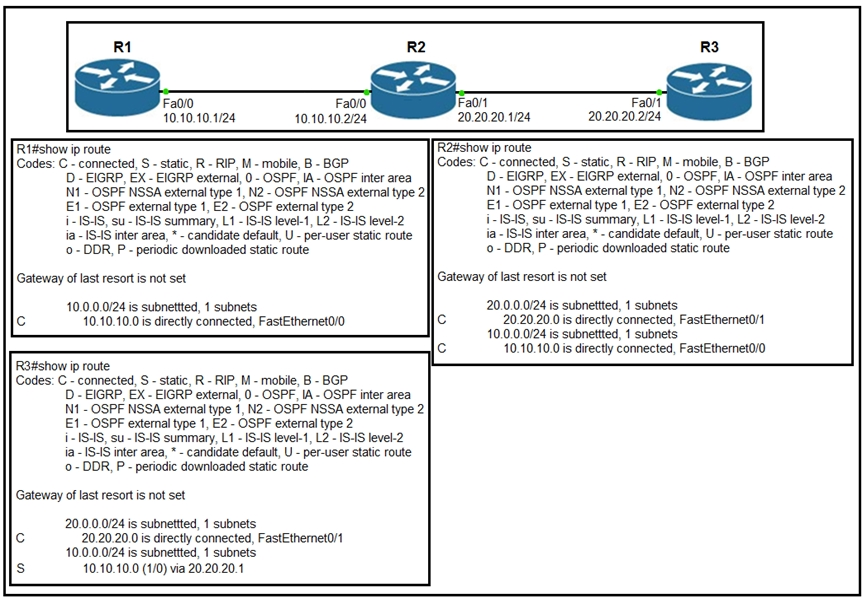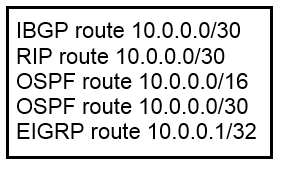After installing a new Cisco ISE server which task must the engineer perform on the Cisco WLC to connect wireless clients on a specific VLAN based on their credentials?
C
Refer to the exhibit. Router R1 is running three different routing protocols. Which route characteristic is used by the router to forward the packet that it receives for destination IP 172.16.32.1?
A
Refer to the exhibit. Router R1 Fa0/0 cannot ping router R3 Fa0/1. Which action must be taken in router R1 to help resolve the configuration issue?
C
By default, how does EIGRP determine the metric of a route for the routing table?
A
Router R1 must send all traffic without a matching routing-table entry to 192.168.1.1. Which configuration accomplishes this task?
C
A packet is destined for 10.10.1.22. Which static route does the router choose to forward the packet?
B

Refer to the exhibit. How does the router manage traffic to 192.168.12.16?
D
What are two reasons for an engineer to configure a floating static route? (Choose two.)
AC

Refer to the exhibit. How does router R1 handle traffic to 192.168.10.16?
B

Refer to the exhibit. A router received these five routes from different routing information sources. Which two routes does the router install in its routing table?
(Choose two.)
AD